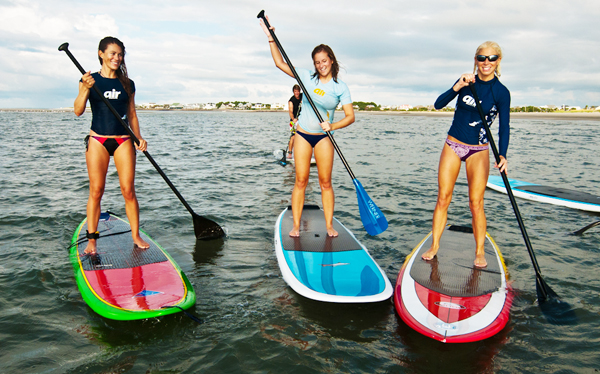The History of Surfing
I don’t need to tell you that surfing is an extremely intense and exhausting sport. It involves pretty much every part of the body, not rarely resulting in a nice physical shape as shown by the gentleman below.
I do admit, that is also the reason why I sometimes just hang around beaches to watch the surfers catch their waves (and something tells me I’m not the only girl doing this). Better than just watching others doing the surfing thing is to learn how to do it yourself. Travelette Kathrine has already explained the logistics of learning to surf in this post.
Did you know that surfing first started out as part of the Polynesian culture and is about 4000 years old? It was initially practiced as a form of body surfing without a board and eventually evoluted into what we know today as surfing. Especially in Tahiti it developed into a form called stand-up-paddling using a paddle to move forward. This can also be practiced in calmer areas like lakes.
photo via catchsomeair.us
In Hawaii, the experiments with surfing were at their peak: riding waves was invented. The crucial meaning of the sport in Hawaiian culture becomes clear knowing that the bays with the best and highest waves were reserved only for the kings. There was a huge fest once a year, where daily working life was interrupted for three months to enjoy sport, dance and food.
With the discovery of the Polnesian Islands by the Europeans, surfing was forbidden by Christian missionaries in 1823, as it was seen as indecent, unnecessary and a waste of time. Fortunately, its renaissance was introduced by the Hawaiian Duke Kanahamoku, who – as a multiple Olympic champion – spread the aloha throughout the world from the beginning of the 20th century on. Since then a lot has happened – materials were improved and different kinds of surfing were “invented”.
You probably know windsurfing and body-boarding, but have you heard of tow-in surfing? Here, surfers let themselves tow into the sea with some kind of vehicle, e.g. a jetski or a helicopter like in this case, into a wave nobody surfed before. This highly dangerous form of surfing is only made for really tough people. If you don’t get the wave, your rescuer on the jetski has only 15-20 seconds until the next monster wave is coming.
tow-in professional Laird Hamilton surfing a wave, photo by Edward Baldwin
And what about Belly Boarding? This surf-associated form was the first one introduced in the UK. The belly boards are smaller and therefore easier to use. The World Bellyboard Championship, held every year in Cornwall, England, first started out in 2002, in commemoration of Arthur Traveller, a Londoner who holidayed with his wooden board at Chapel Porth every year. It’s a very simple, “back-to-basic” competition, according to the organizers. No wetsuits, no leashes and no swim fins. A bit of wood and a swimsuit is all you need and above all, it’s free! Sounds pretty easy, huh? Now I only have to start to watching Kathrine’s guide and learn how to surf!

photos via djmick.co.uk
post written by Franziska Gutsche







Comments
Post a Comment